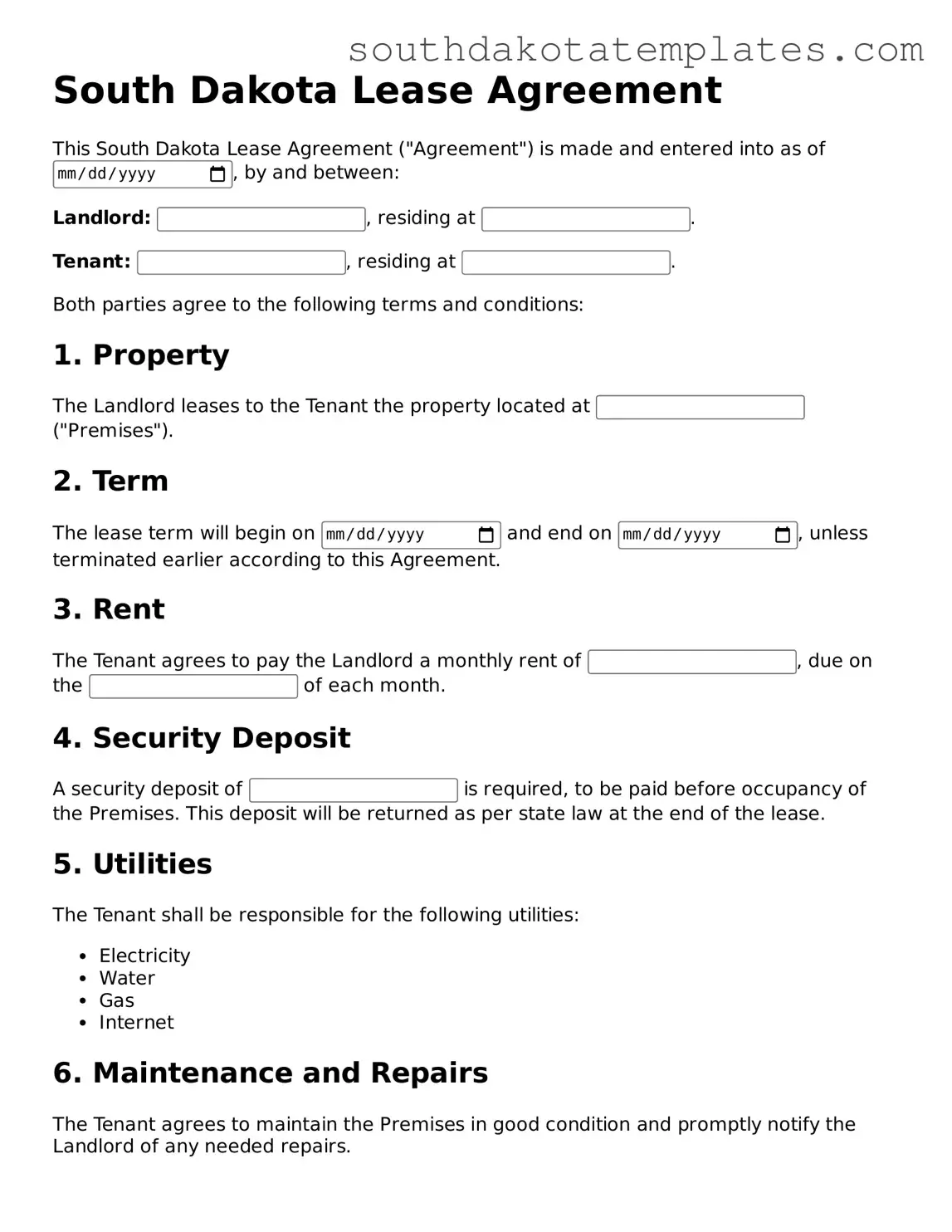Free South Dakota Lease Agreement Document
A South Dakota Lease Agreement form is a legal document that outlines the terms and conditions between a landlord and a tenant for renting property. This form ensures that both parties understand their rights and responsibilities, providing clarity and protection throughout the rental period. If you're ready to create a lease that meets your needs, fill out the form by clicking the button below.
Get Lease Agreement
